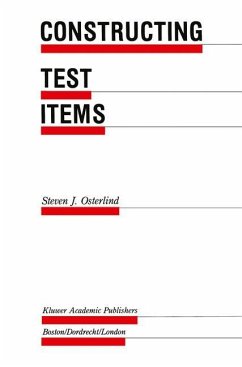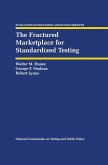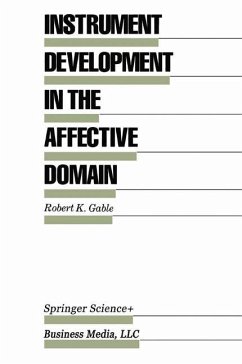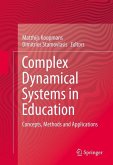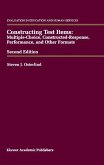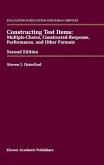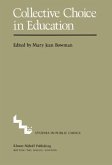1 What Is Constructing Test Items?.- What This Book Is About.- Four Major Issues in Item Construction.- Type of Items Addressed.- Types of Items Not Covered.- Criteria for Material Included.- Major Purposes Of This Book.- Goal for This Book.- Standardizing Editorial Guidelines for Writing Items.- Other Purposes.- Why This Information Is Important.- Persons For Whom This Book Is Intended.- Two Groups of Item Writers.- Other Groups Who May Use This Information.- Overview Of The Remaining Chapters.- How To Approach the Chapters.- 2 Definition, Purpose, And Characteristics of Items.- Defining A Test Item.- The Definition of an Item.- Understanding the Definition.- Test Item Nomenclature.- No Current Uniform Terminology.- The Term Test Item.- The Examinee.- Specifying Item Formats.- Writing Samples, Exercises, and Essay-Type Questions.- Types of Item Formats.- Terms for Parts of the Test Item.- Terms Used in Scoring Test Items.- Putting Together the Parts of an Item.- Purpose For Test Items.- Psychological Theory as Background to Items.- Items as Measures of Constructs.- Constructs Exist for All Persons.- Criteria For Good Test Items.- Difficulty of Establishing Criteria.- Accepted Criteria for Good Items.- Assumptions For Test Items.- Assumptions as Theoretical Background to Constructing Items.- The Assumption of Unidimensionality for Items.- The Assumption of Local Independence for Items.- The Assumption of Items Characteristic Curves.- The Importance of the Assumptions.- Classification Of Items.- Understanding How Examinees Respond To Items.- Conclusion.- 3 Determining the Content For Items: Validity.- Basic Concepts of Validity.- Understanding Validity.- A Complete Definition of Validity.- Construct-Related Evidence for Validity.- The Relationship Between Constructing Test Items and Validity.- Abetting Validity in the Item Construction Process.- Documenting the Item-Construction Steps.- Conditions For Items To Contribute To Validity.- Defining a Test¿s Purpose.- Devising Specifications for Tests and Items.- Content-Related Evidence for Validity.- Initial Considerations When Selecting Content For Items.- The Relationship Between Tests and Curriculum.- Modern Goal Conception.- Achieving Clarity In A Test¿s Content.- Importance of Specificity in Content.- Examples of Clearly Defined Content.- Developing Test Content Specifications.- Planning for Test Content Specifications.- Researchers¿ Work in Promoting Clarity of Content.- Establishing a Table of Test Content Specifications.- Alternative Ways to Present Test Content Specifications.- The Test Developer¿s Responsibility for Preparing Test Content Specifications.- Melding Cognitive Processing Levels With Items Content.- Identifying Levels of Cognitive Processing.- Difficulty of Using Bloom¿s Taxonomy to Write Items.- The Framework for Instructional Objectives Taxonomy.- Test Item Specifications.- The Role of Test Item Specifications.- Caution Against Making Test Item Specifications Too Prescriptive.- Making An Item Consistent With Its Specification.- The Importance of Item-Objective Congruence.- Practice in Determining Congruence.- Conclusion.- 4 Starting To Write Items: Practical Considerations.- The Importance Of Good Writing In Test Items.- Sources For Information On Writing Style.- Computer Dictionaries and Thesauruses.- Using Taxonomies In Writing Items.- Writing Items at the Higher Taxonomic Levels.- Independence of Subject Matter from Cognitive Processing Level.- Suggestions for Writing Items with Other Cognitive Processing Taxonomies.- Distinctness Between Stem and Response Alternatives.- Importance Of An Interrogative Stem.- Determining The Correct Response For Test Items.- Absolutely-Correct Type Test Items.- Best-Answer Items.- Determining Which Response Is Best.- A Technique for Judging Items.- Difficulty in Writing Best-Answer Items.- Determining The Optimal Number Of Response Alternatives.- Making Response Alternatives Plausible.- Number of Distractors and Highly Able Examinees.- Humorous Distractors.- Use Of All Of The Above Or None Of The Above As Response Alternatives.- Advantages of All Of The Above Or None Of The Above.- Cautions With All Of The Above Or None Of The Above.- Special Circumstances with All of the Above.- All Of The Above Or None Of The Above and Item Difficulty.- Using Specific Determiners In Test Items.- Constructing Complex Response Alternatives.- Time Examinees Need To Respond To Items.- Conclusion.- 5 Style, Editorial, and Publication Guidelines For Items in the Multiple-Choice Format.- Understanding The Multiple-Choice Item Format.- Advantages and Criticisms Of Items In The Multiple-Choice Format.- Strengths of the Format.- Criticisms of the Multiple-Choice Format.- Editorial Format For Items.- Description of Editorial Style.- Sources for Learning Editorial Style.- Editorial Style for Graphics.- Avoiding Biases in Language.- Sources for Specialized Editorial Circumstances.- Using Directions Correctly.- Description of Directions.- Rules for Directions.- Specialized Style Rules For Multiple-Choice Items.- Avoid Repetition in Options.- Omit Articles in Options.- Handling Measurement Units.- Use of Third Person.- Italics and Boldface.- What and Which.- Ordering Response Alternatives.- Aligning Numerals.- Type Characteristics and Page Layout.- Importance of Appearance.- Suggested Typefaces for Items.- Suggested Type Size for Items.- Placing Passage and Graphic Dependent Items Together.- Conclusion.- 6 Style, Editorial, and Publication Guidelines For Items in Other Common Formats.- Precision In Wording, Again.- Understanding Items In The True-False Format.- Advantages of the True-False Format.- Criticisms of the True-False Format.- Comparison of True-False and Multiple-Choice Items.- Rules for Presenting True-False Items.- Understanding Items In The Matching Format.- Cautions for Matching Items.- Directions for Matching Items.- Understanding Short-Answer AndSentence-Completion Items.- Narrow Focus of the Format.- When to Use Short-Answer and Sentence-Completion Items.- Special Considerations for Short-Answer and Sentence-Completion Formats.- Converting Short-Answer and Sentence-Completion Items to Other Formats.- Understanding Cloze-Procedure.- Conclusion.- 7 Judging the Quality Of Test Items: Item Analysis.- Measurement Error.- Description of Measurement Error.- Keeping Measurement Error in Perspective.- Understanding Item Analysis.- Validating The Content Of Items.- Quantifying Results of Judge Opinions.- Alternative Quantification Schemes.- Using Leading Questions In Item Analysis.- Item Statistics.- The Proportion Correct Index.- Using P-Values for Item Analysis.- Miskeyed Items.- Comparing P-Values for High- and Low-Achieving Subpopulations.- Comparing Several Subpopulations.- Item Discrimination Indices.- The Point-Biserial Measure of Correlation.- Shortcomings of the Point-Biserial Estimate.- The Biserial Estimate of Correlation.- The Phi Coefficient.- Using the Phi Coefficient with Pre- and Post-Instructed Groups.- Shortcomings of the Phi Coefficient of Correlation.- Item Parameters.- Examining Item Characteristic Curves with Item Response Theory.- Item Bias.- Simple but Incomplete Bias-Detection Strategies.- Judgmental Approaches to Bias Detection.- Conclusion.- 8 Ethical, Legal Considerations, and Final Remarks for Item Writers.- Ethical Concerns For Item Writers.- Obtaining Copyrights For Materials.- Preparing and Modifying Items For People Who Have Handicapping Conditions.- Concluding Comments About Constructing Test Items.- References.- Author Index.

